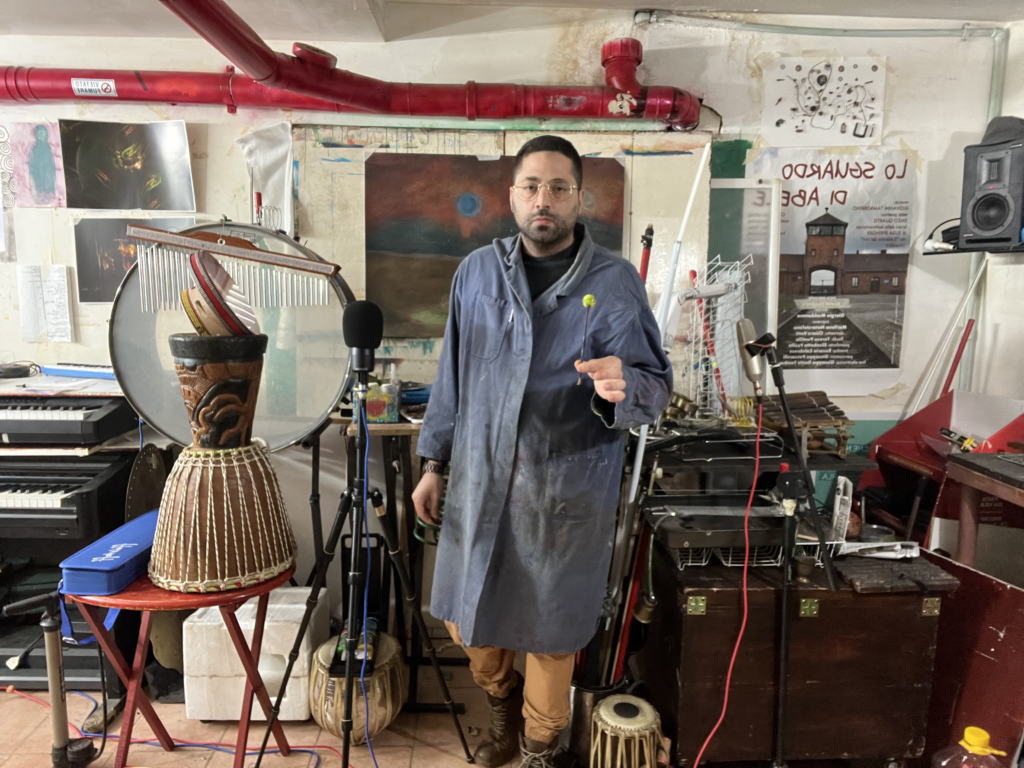Giuseppe Dante Tamborrino asks:
Why is it that a Picasso painting can be widely known and understood by everyone, while sound abstractions are still considered academic and incomprehensible?
Tamborrino’s answer to that question, Acrylic Sounds, was born in January 2024 in the Laterza province of Taranto – Puglia – Italy in the garage of the professor and composer of electro-acoustic music.
Between 2019-2021 (in the period of COVID-19), Tamborrino created a series of abstract paintings using some of the same algorithms he has been using to generate CSound scores for the past 10 years. His idea was to bring his students closer to the concept of sound abstraction by applying the same principles of abstraction to paintings as to musical scores.
Tamborrino does not call himself a painter and has always argued that painting is painting, sound is sound, and sculpture is sculpture; each has a different role, but sometimes they use the same concepts.
While waiting for his score generation algorithms to compile, Tamborrino engaged in creative outbursts with a sponge and a brush as he drew lines or experimented with random color transformations obtained by sponging, likening it to techniques of sound morphing.
Taking these 60 semi/casual paintings as inspiration, he then realized them as Sounds in Kyma. For each painting, he created a formal pre-design and customized Smalltalk scripts to get closer to the meaning of the picture under analysis.

For the sonorisation of the painting “La Sinusoide” he used a Capytalk expression that allows you to control the formants of a filter and the index of the formants with the Dice tool of the Kyma Virtual Control Surface (VCS), generating several layers gradually and quickly with the “smooth” Capytalk function.
He also used the Kyma RE Analysis Tool for the generation of a Resonator-Exciter filter, creating transformations of the classic sine wave with the human voice.
He used a real melismatic choir, because the painting represents a talking machine…

For “Le Radio”, Tamborrino tried to simulate the search for the right radio station, transforming songs between them. To do this he reiterated several times sounds and music produced by a group of songs in the same family using a simple “ring modulator” to suggest AM radio and used a Capytalk expression to emulate the gradual spectral transformation effect of switching radio stations combined with random gestures to simulate the classic noise between the station and the music. Finally, he used granular synthesis to create glitch rhythmic transitions and figurations and combined selected abstract material as multiple tracks of a Timeline.

“The Mask of the Seagulls” was inspired by the observation of an elderly man annoyed by the anti-COVID mask and some seagulls that repeatedly circled around him, chanting and emitting verses as if nature were making fun of him.
To express the annoyance of the man, Tamborrino simply recorded his own breath recorded through a mask.
For the creation of this syneathesia, Tamborrino emulated the behavior of cheerful and playful seagulls, with a script for the management of the density, frequency, and duration of the grains of granular synthesis; in exponential mode with decelerations and accelerations and friction functions for physics-based controls and swarming.
All of these layers were then assembled in a multi-track Timeline.
Tamborrino plans to publish the work as a book of paintings with QR codes for listening and will exhibit the work as paintings paired with performances on an acousmonium.
Some of Tamborrino’s recent work can be heard at the upcoming New York City Electroacoustic Music Festival, and he has recently released a new album under the Stradivarius Records label.
